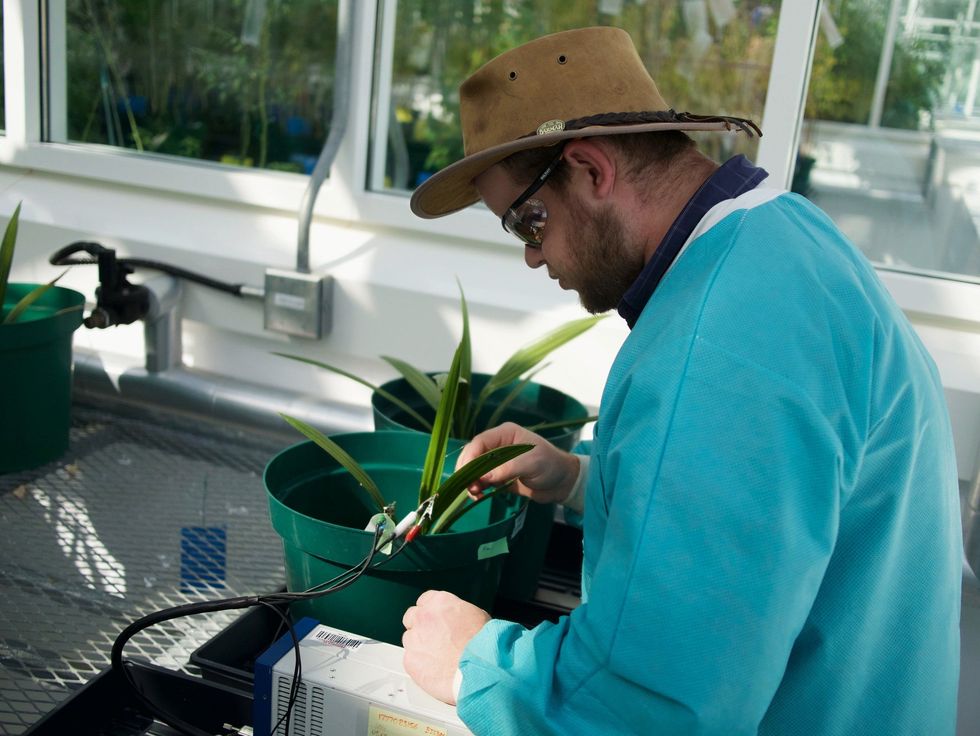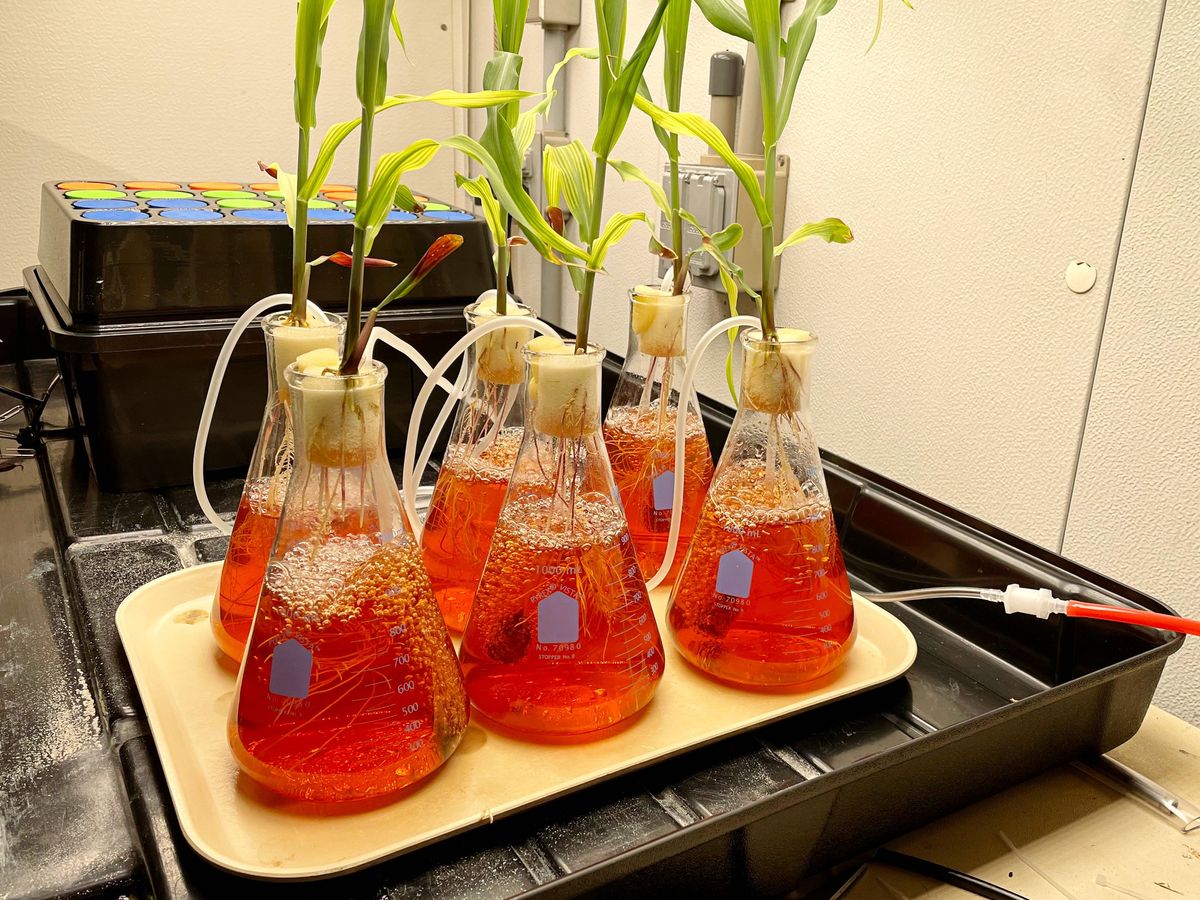This article is part of our exclusive IEEE Journal Watch series in partnership with IEEE Xplore.
As an electrical engineer, James Reynolds didn’t expect to work so closely with plants. But in a way, his ancestral history and his personal history have long been leading him to his ongoing research that leverages bioelectricity to better understand plant health.
Reynolds’ family has farmed land in North Carolina for more than 300 years. He’s a cancer survivor who’s interested in health and giving back to society. And the COVID-19 pandemic gave him plenty of time to closely analyze plants he grew in his grandparents’ basement.
In a forthcoming paper to be published in IEEE Transactions on AgriFood Electronics(TAFE), Reynolds and fellow researchers at North Carolina State University explored how plant tissue’s impeding of electrical current can be monitored to identify plants under stress with relative immediacy—less than an hour, in some cases.
“We’ve done our best in this paper to create a real, applicable measurement that adds a new dimension to the picture of what’s going on with a plant,” says Reynolds, who is a postdoctoral research scholar at NC State’s iBionicS Lab and first author of the paper. “Our goal is to give more tools to plant biologists, [Internet of Things] makers, and anyone else involved in smart farming or concerned with plants.”
Continuous, real-time monitoring of plant stress could make it possible to slow or prevent crop damage before plants die—and so the potential applications in smart farming and precision agriculture are varied.
This information could, for example, make it simpler for plant phenotyping researchers to compare how different plants respond to water shortages, helping those researchers develop drought-tolerant crops. Farmers could assess a plant’s water status directly—rather than relying on indirect measurements like soil moisture level or lagging indicators like yellowing leaves—and shift watering schedules for greater crop yield.
Creating a Stress Monitor for Plants
Bioimpedance, which measures how living tissues respond to an alternating current or voltage, is already used in clinical tools to assess various physiological markers in the human body. Plant bioimpedance is a more nascent study, but it’s no less useful: The electrical conductivity of a plant is similarly affected by factors including the plant’s water content.
So by applying a current to a plant and measuring the resulting voltage, and then calculating the impedance (voltage divided by current), researchers can assess whether a plant has a healthy level of hydration. When water levels in a plant are lower, so is the ion concentration—meaning the resistance, and therefore the bioimpedance levels, will be higher.

In this new work, the researchers focused on corn and soybean plants, given their importance to the global economy and food supply. They attached 27-gauge needle electrodes made of platinum and iridium to the plants, along with a commercially available potentiostat to send current through the plants. The researchers measured impedance from 5 hertz to 500 kilohertz, but they focused on 5 Hz impedance for this paper because “it corresponds well with the extracellular fluid drying up, which is a good proxy for drought stress,” Reynolds says.
The team simulated drought conditions by exposing plants to polyethylene glycol—a polymer often used in experiments to induce water deficit—or by withholding water, then sent a current through the crops. The resulting changes in bioimpedance readings, the researchers found, very quickly reflected physiological changes in the plants.
When using the polymer to induce drought, plants’ bioimpedance measurements shot 25% percent higher in less than an hour. A similar pattern held when withholding water, with those crops’ bioimpedance readings rising within a few hours. Comparing these readings with imaging, soil moisture, and leaf relative water content backed up the impedance measurements.
“The results are very positive,” says Danilo Demarchi, editor-in-chief of IEEE TAFE and professor at Politecnico di Torino’s Department of Electronics and Telecommunications, whose research is in smart electronic systems for agri-food. At “the moment, all the implications [of plant bioimpedance] are still not demonstrated, so a work for understanding more deeply the information that plant bioimpedance can bring is of great interest.”
Demarchi notes that bioimpedance applications are both simple and inexpensive to implement, making it attractive for use in precision agriculture. They could, he added, also be used in concert with other sensors that measure factors like ambient light, temperature, and soil moisture.
“When someone has a cardiac problem the emergency room gives them an EKG; if you’re severely dehydrated, they’ll put electrical probes on you,” says Alper Bozkurt, a co-author of the paper and co-director of NC State’s Center for Advanced Self-Powered Systems of Integrated Sensors and Technologies (ASSIST Center).
“It’s already happening with humans, and now the question is: How do we do it with plants?” Bozkurt continues. “Especially with population growth and people moving out of rural areas, we need to do something as engineers to help bring healthy foods to people’s tables. That’s been our motivation.”
Smart Farming
Indeed, smart farming, precision agriculture, and related fields have attracted more research activity in recent years, as urbanization and climate change spark concerns about continuing to grow a global food supply. As such, plant biologists and engineers are coming together more frequently; as Reynolds notes, on this paper his fellow researchers include not only other NC State engineers but also scientists from the university’s Plant Sciences Initiative.
Bozkurt served as Reynolds’ advisor for his doctoral studies, and in 2016 they began presenting work on novel nanocellulose-based electrodes that they developed to monitor plant electrochemistry without harming the plant itself. Reynolds points out they weren’t starting from scratch, however.
“We found that plant biologists have actually been running what were essentially early electrical impedance measurements on plants for a long time, but they couldn’t do it on live plants,” Reynolds says. “They knew a lot about patterns based on these sections of plants, but they didn’t have the electrical engineering skills to understand interpretations, and frankly we didn’t have the tools yet.”
Now electronics are smaller, electrodes are more advanced, and the Internet of Things has fueled rapid expansion of networking technologies.
“With the capabilities now, and how much technology has changed, we as engineers are able to collaborate so much more closely with plant biologists,” Reynolds says. “This is where it all comes together.”
Julianne Pepitone is a freelance journalist who reports via text, video, and television. She spent years on staff at CNN Business and then at NBC News, covering consumer tech, cybersecurity, and business. Now a freelancer, she works with an eclectic roster of clients. Beyond Spectrum, CNN, and NBC, her bylines can also be found at HGTV Magazine, Memorial Sloan Kettering, NYMag.com, Glassdoor, Popular Mechanics, Cosmopolitan, Town & Country, Thrillist, MagnifyMoney, The Village Voice, and more.



